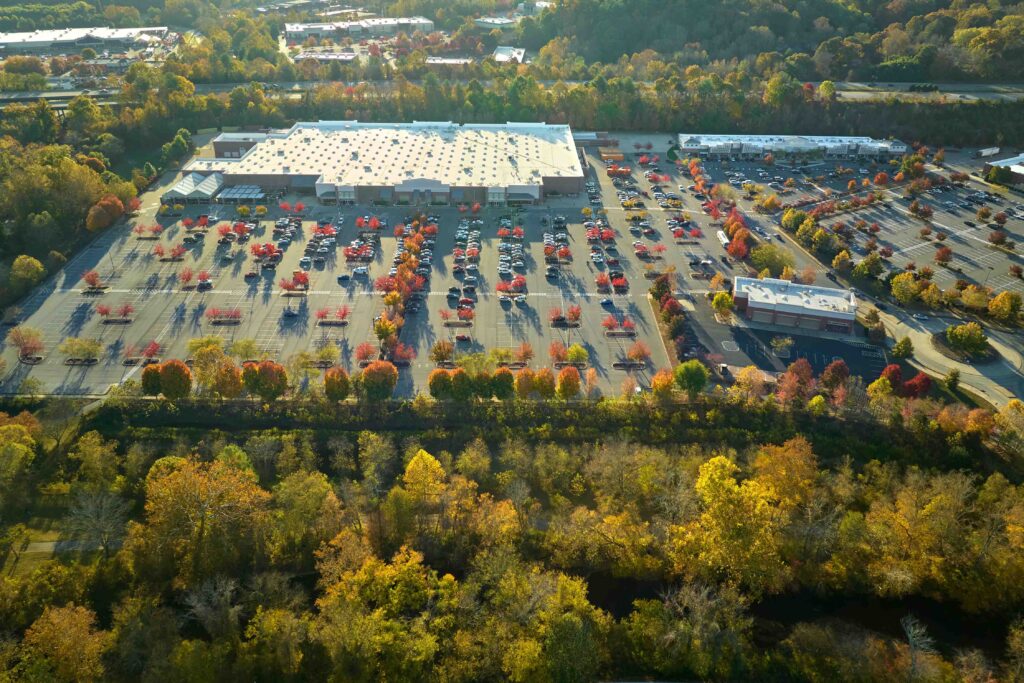Reviewers
Dr. Valerie Kilders, Assistant Professor, Purdue University
Yingxin Tan, Ph.D. candidate, Department of Agricultural Economics, Purdue University
Article
Heterogeneous preferences for neighborhood amenities: Evidence from GPS data by Cody Cook
Source
Cook, C. (2025). Heterogeneous preferences for neighborhood amenities: Evidence from GPS data. Review of Economics and Statistics, 1-43. https://doi.org/10.1162/rest_a_01551
Summary
Where people choose to shop, eat and spend their time has significant implications for businesses trying to stay ahead in fast-changing urban markets. Neighborhoods across the U.S. are constantly evolving — not just in terms of who lives there but also in the kinds of amenities available like restaurants, retail stores, gyms and entertainment venues. As businesses come and go, a natural question arises: How do income-based differences among residents affect which amenities are used, valued and sustained?
Dr. Cody Cook explored this question in a recent study published in the Review of Economics and Statistics using GPS data from over 7 million devices. The data tracked more than 100 million visits to 1.4 million businesses across the 30 largest metropolitan areas. Cook’s goal was to better understand how preferences for local amenities vary by income — and what those patterns reveal about urban development and consumer access.
While higher-income residents often live in areas with fewer amenities nearby, they still make 30-45% more visits to restaurants, shops and entertainment venues than their lower-income counterparts. They are also more likely to travel farther to reach the places that match their preferences, such as high-end restaurants or boutique fitness studios.
Lower-income consumers, by contrast, tend to place greater value on convenience and affordability, often frequenting large national chains like Dollar General or Taco Bell. These patterns reflect clear segmentation in consumer behavior, especially in food and personal service categories.
Chains play an especially important role in illustrating these income-linked preferences. Brands like Whole Foods, Chipotle and Costco tend to attract higher household incomes, while Dollar General, Taco Bell and Walmart see more visits from lower-income consumers. That said, not all chains serve a narrow segment. Brands like Meijer and Sam’s Club appear to appeal more broadly across income groups. Preferences also tend to be more correlated across income brackets for chain stores than for independent businesses. This may be due to chains’ standardized experiences or broader marketing strategies. The differences in preferences for independent businesses underscore how consumption choices can reflect variations in purchasing power.
Cook also finds that differences in preferences are especially pronounced for certain categories of amenities, including personal services and restaurants. He concludes that these sectors might act as “pioneer sectors” that accompany early stages of gentrification[1].
Despite income-based differences at the business level, preferences at the neighborhood level are surprisingly aligned. People across the income spectrum tend to value dense, amenity-rich neighborhoods. This suggests that access to a variety of options, rather than specific types of businesses, is what drives much of a neighborhood’s appeal.
[1] The term “gentrification” was first introduced by Ruth Glass in 1964 to describe the “switch from suburban to urban aspirations” she observed in London neighborhoods (Glass, 1964). She noticed a growing trend of middle class (or the “gentry”) moving into traditionally working-class areas. This shift often displaced long-term residents, while uplifting the social status of the neighborhood, as new residents opened more businesses, invested in property, and lobbied for infrastructure improvements (Japonica Brown-Saracino, 2013).
What does this mean for food and agricultural business?
Accessibility and consumption patterns are critical considerations for food and agricultural businesses and policymakers. While demographic factors like income differences often inform market strategies, solely focusing on these factors risks missing a bigger picture. As Cook’s paper indicates, neighborhood-level changes and urban planning significantly shape consumer purchase behavior nowadays.
Think beyond income.
As urban neighborhoods continue to evolve, food and agricultural business leaders must think beyond income brackets and consider more spatial factors, such as amenity density, neighborhood appeal and proximity to urban cores. Adapting these broader patterns of urban change can help businesses better position themselves to thrive amid the changing market.
Understand layered preferences.
In addition to adopting a broader perspective at the neighborhood level, food and agricultural businesses need to recognize the layered patterns in consumer preference: choice is shaped not only by income but also by factors like product type, brand, price sensitivity and other socio-demographics. This understanding allows businesses to tailor product offerings and pricing strategies to meet their target markets’ spending capacity and expectations within their neighborhoods.
Recognize the influence of store ownership.
Store ownership is another key determinant in shaping consumer preferences and determining a business’s target market. For example, chains have broader appeals but less flexibility in tailoring products and prices to local customers, whereas independent stores typically offer more customization to meet local preferences. Business owners operating or expanding a chain could benefit from leveraging their brand consistency to establish relationships and drive sales, while independent stores more heavily lean into their uniqueness.
Leverage change as opportunity.
As the urban landscape evolves, gentrification brings both challenges and opportunities for food and agricultural businesses. Rather than viewing these shifts as a threat, business owners can capitalize on the neighborhood changes as a catalyst to refine their brand value proposition, articulating the tangible value they offer to both long-term residents and new arrivals. In doing so, they transform uncertainty into a long-term growth and relevance platform.
[1] The term “gentrification” was first introduced by Ruth Glass in 1964 to describe the “switch from suburban to urban aspirations” she observed in London neighborhoods (Glass, 1964). She noticed a growing trend of middle class (or the “gentry”) moving into traditionally working-class areas. This shift often displaced long-term residents, while uplifting the social status of the neighborhood, as new residents opened more businesses, invested in property, and lobbied for infrastructure improvements (Japonica Brown-Saracino, 2013).





